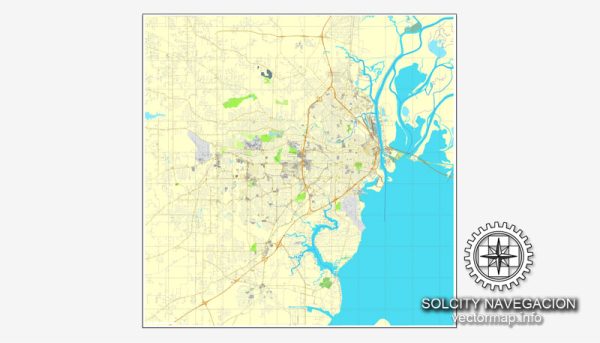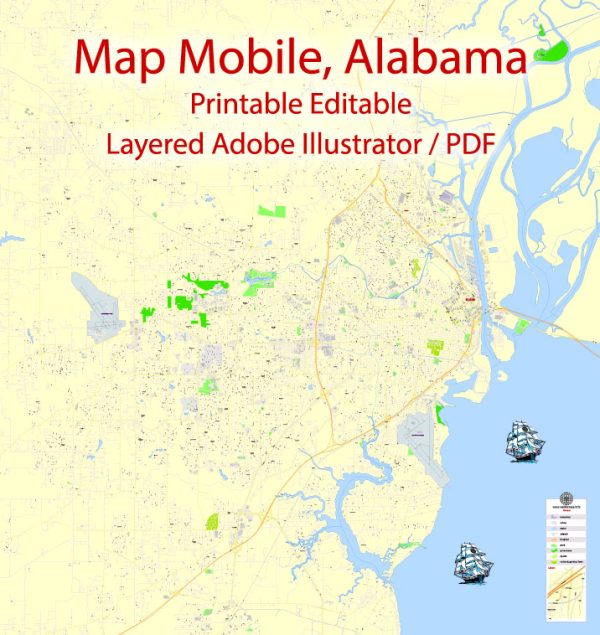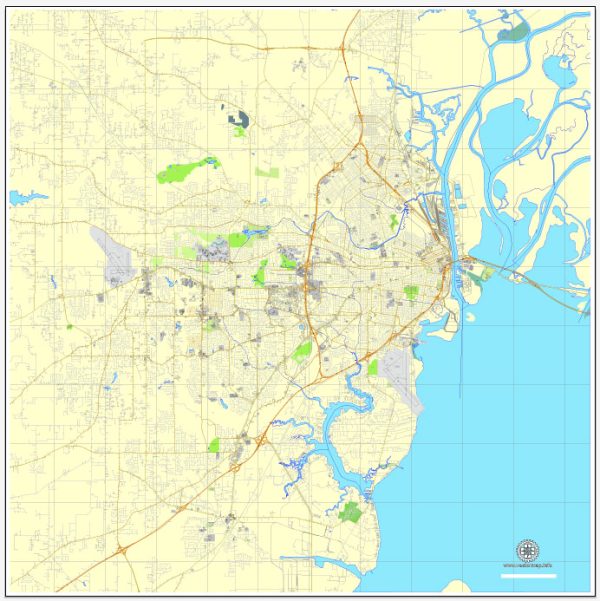Mobile, Alabama, has a rich history that spans centuries, and its urban development reflects the influences of Native American cultures, European colonization, and the growth of the United States. Here’s a brief overview of Mobile’s history of urban development:
- Indigenous Peoples: Before European exploration and colonization, the Mobile area was inhabited by Native American groups, including the Mobile and Tensaw tribes. These indigenous peoples had a significant influence on the region’s early culture and development.
- European Exploration and Colonization: The area around Mobile was explored by the Spanish in the early 16th century, and later the French established a presence in the region. In 1702, Mobile was founded by French colonists as the capital of French Louisiana. The settlement played a strategic role in the fur trade and as a port.
- British Rule: Mobile came under British control in the mid-18th century after the Treaty of Paris in 1763. During this time, the city continued to grow as a trading center.
- American Influence: After the American Revolution, Mobile became part of Spanish West Florida in 1780. In 1813, the United States seized Mobile from Spanish control during the War of 1812. The city became part of the Mississippi Territory in 1817.
- Cotton and Steamboats: Mobile’s growth in the 19th century was closely tied to the cotton industry and the development of steamboat transportation. The city’s port became a vital hub for cotton exports, contributing to its economic prosperity.
- Civil War and Reconstruction: During the Civil War, Mobile was a Confederate stronghold and suffered significant damage in the Battle of Mobile Bay in 1864. After the war, the city faced the challenges of Reconstruction, but its economy gradually recovered.
- Industrialization: In the late 19th and early 20th centuries, Mobile experienced industrial growth with the expansion of the shipbuilding and paper industries. The city’s economy diversified, and its population continued to increase.
- 20th Century Development: Mobile continued to evolve throughout the 20th century, with expansions in commerce, education, and infrastructure. The construction of the Bankhead Tunnel in 1940 and the growth of the aerospace industry with companies like Airbus contributed to the city’s modernization.
- Modern Era: Today, Mobile is a major port city with a diverse economy that includes aerospace, shipbuilding, and healthcare. The city has preserved many historic sites, including the Mobile Historic District, to showcase its rich history.
Mobile’s urban development is a testament to its resilience and adaptability, reflecting the various historical influences that have shaped the city over the centuries.




 Author: Kirill Shrayber, Ph.D.
Author: Kirill Shrayber, Ph.D.